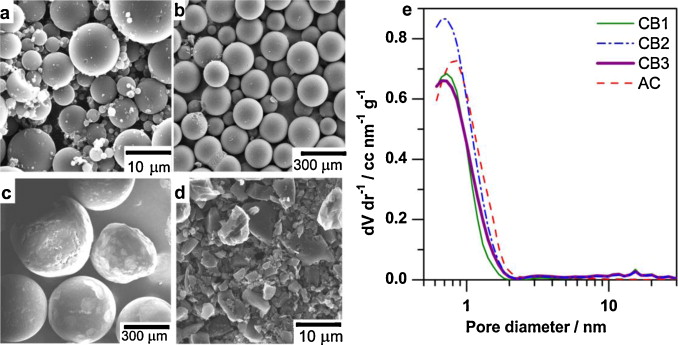|
MRC SCIENCE AND TECHNOLOGY |
|
|
MRC ENGINEERING AND MANUFACTURING |
|
|
|
Carbon Materials as a Flowable Electrode in Electrochemical Flow Capacitors |
Prof. Yury Gogotsi was invited to QF, Doha, Qatar,to discuss innovations and technologies, developing the latest scientific achievements and their commercializing ...
 Investigation of Carbon Materials for Use as a Flowable Electrode in Electrochemical Flow Capacitors Investigation of Carbon Materials for Use as a Flowable Electrode in Electrochemical Flow Capacitors
Jonathan W. Campos, Majid Beidaghi, Kelsey B. Hatzell, Christopher R. Dennison, Benjamin Musci, Volker Presser, Emin C. Kumbur, Yury Gogotsi
Novel electrical energy storage concept, the electrochemical flow capacitor (EFC), holds much promise for grid-scale energy storage applications. The EFC combines the principles behind the
Carbon Slurry; Electrochemical Flow Capacitor; Flow Battery; Supercapacitor
Fig. 1. Schematic of the operation of an EFC system. Slurries are charged in the flow cell and stored in separate containers. They are pumped back to the cell for discharge.
operation of flow batteries and supercapacitors, and enables rapid charging/discharging and decoupled energy/power ratings.Here, the effects of carbon particle solid fraction, shape, and size on the electrochemical and rheological properties of slurry electrodes are investigated.
Read more about Electrochemical Flow Capacitor on mrc.org.ua
|
|
MRC ltd. / Kiev MATERIALS RESEARCH CENTRE
www.dom.ua
|
|
Science |
|
26.08.2017 02:57
Researchers described a process by which nanodiamonds — tiny diamond particles 10,000 times smaller than the diameter of a hair — curtail the electrochemical deposition, called plating, that can lead to hazardous short-circuiting of lithium ion batteries... |
04.06.2017 23:47
Join world-class nanoscientists and environmental leaders to explore how the capacity to harness molecules and atoms is accelerating spectacular inventions — including light-weight “wonder materials,” vital energy-storage technologies, and new sources of renewable energy — which promise to redefine the very future of energy... |
04.06.2017 23:39
It’s been just over five years since researchers in Drexel’s Department of Materials Science and Engineering reported on a new, two-dimensional material composed of titanium and carbon atoms, called MXene... |
11.02.2017 18:56
It’s been just over five years since researchers in Drexel’s Department of Materials Science and Engineering reported on a new, two-dimensional material composed of titanium and carbon atoms, called MXene... |
|
|